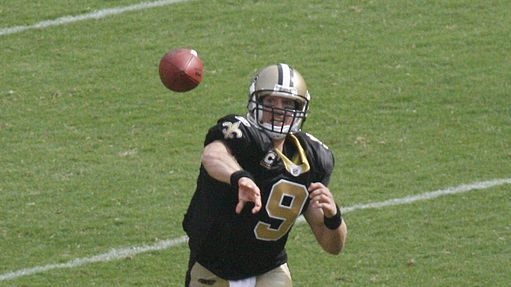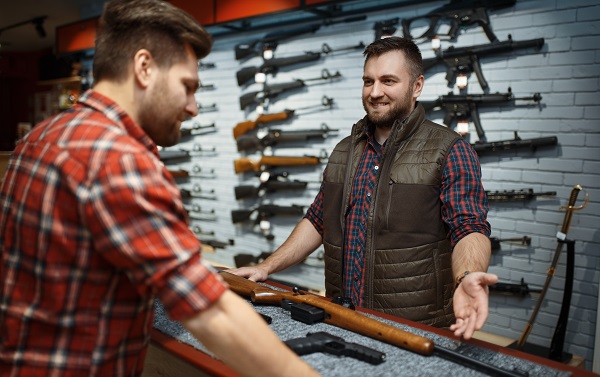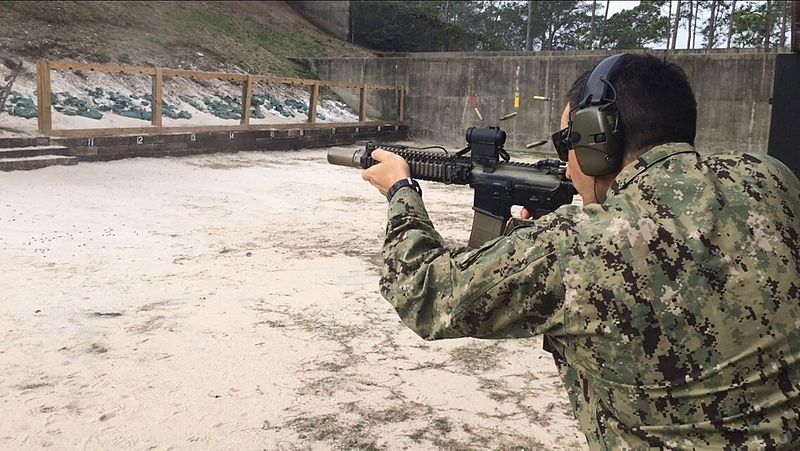
Ladies and gentlemen, it’s time to explore one of the great questions of gun newbies (and some not-so-newbies) everywhere:
What the heck is a barrel twist rate, and how does it relate to my AR?
Now, I imagine that given the caliber (pun absolutely intended) of individuals enrolled at or considering attending SDI, a good portion of you already have a pretty good idea not only what all this is about but what your preferences are. Some of you, however, might be feeling a little behind the class — don’t!
Hey — relax. We’re here to help each other out, and help you out we shall!
Let’s take a step backward for a minute.
Rifling comes to us as the result of an acknowledgment of a very simple principle: When you launch a projectile, spinning it makes it noticeably more accurate. The example I have always heard was one of football – you want a good spiral on that ball to get it to go right where you want it.

The photo is largely just for fun, but you get the idea – and so did gunsmiths a few generations of firearms back.
Rifling refers to the grooves cut into the inside of the barrel. The grooves spin the bullet on its way out, giving you, the shooter, a much more accurate shot.
Hooray for us.
Now, the twist rate, as it’s called, can be simplified in the mind (by me, at least) by thinking of it as the “rifling rate.” Just don’t call it that in public; folks will give you the stink-eye. The twist rate measures the rate at which the rifling makes a complete twist – see how that works? Or, to put it in a write-in-your-notes version:
The twist rate is the distance in which the rifling makes a full, 360 degree rotation.
Bam. All done here, right? Wrong.
You see, no gunsmith or firearms enthusiast worth his or her salt can just let things be by deciding the most efficient turning rate for all rifles and calling it a day.
There are multiple twist rates, and here we’re going to look into how a twist rate is notated. A common slow twist rate, for example, could be notated as 1:12. A twist rate of 1:12 means that the bullet does one 360 degree rotation per 12 inches of barrel. A 1:7 twist rate indicates that the bullet will undergo a rotation once every seven inches, which, as you might imagine, is a much faster spin.
For those who are curious, Guns&Ammo notes that the military uses the 1:7 twist rate.
So, why do you want a faster twist rate or a slower twist rate?
The answer is simple: bullet weight.
There are a wide variety of bullet weights available, anywhere between 30 and 80 grains, in the extremes of the 5.56 mm NATO/.223 Remington chambering. That’s really for another blog post, but suffice it to say that if you stick to the standard range of ammunition weight, largely between 40 and 70 grains, you’ll do well with the now-fairly-standard 1:9 and 1:7 twist rates. Want to shoot a little lighter? Go 1:9. Little heavier? Give 1:7 a try. Both are extremely common, and I have little doubt you’ll find what you need for most uses.
As a general rule, you can get away with a faster spin rate than necessary for a specific bullet, but twist a bullet too slowly and you’ll lose some of your accuracy and stability.
Can’t have that.
For those of you who knew all about this already, take a moment and share this on Facebook and Twitter and tag a couple friends that could use the little lesson! Happy shooting!


